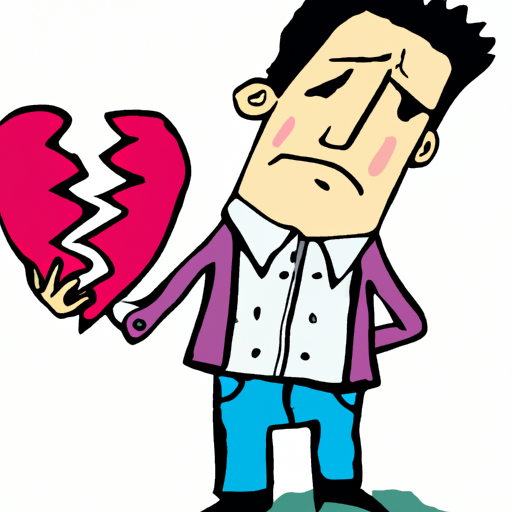Impotence, also known as erectile dysfunction, is a condition that affects millions of men worldwide. It is characterized by the inability to achieve or maintain an erection, which can significantly impact a man’s sexual and emotional well-being. In this article, we will delve into the various aspects of impotence, including its causes, symptoms, and diagnosis. We will also explore the treatment options available, ranging from medications and therapies to lifestyle changes. Additionally, we will discuss the role of lifestyle factors in impotence and provide strategies to reduce the risk of developing this condition. By understanding impotence and the tools to address it, individuals can take control of their sexual health and improve their overall quality of life.
1. Understanding Impotence: Causes, Symptoms, and Diagnosis
Impotence, also known as erectile dysfunction (ED), is a condition that affects millions of men worldwide. It refers to the consistent inability to achieve or maintain an erection that is sufficient for sexual intercourse. Understanding the causes, symptoms, and diagnosis of impotence is crucial for both patients and healthcare professionals.
Causes:
Impotence can be caused by a variety of factors, both physical and psychological. Physical causes include underlying medical conditions such as diabetes, high blood pressure, heart disease, obesity, hormonal imbalances, and certain medications. Lifestyle factors such as excessive alcohol consumption, smoking, drug abuse, and a sedentary lifestyle can also contribute to impotence. On the other hand, psychological causes like stress, anxiety, depression, relationship problems, and performance anxiety can also lead to impotence.
Symptoms:
The primary symptom of impotence is the inability to achieve or sustain an erection. However, it is important to note that occasional difficulties with erection are normal and not necessarily a cause for concern. A diagnosis of impotence is made when the problem becomes persistent and affects a man’s sexual life consistently. Other symptoms that may accompany impotence include reduced sexual desire, difficulty in achieving orgasm, and a lack of confidence or self-esteem related to sexual performance.
Diagnosis:
When a man experiences persistent problems with erection, it is advisable to consult a healthcare professional. The diagnosis of impotence typically involves a comprehensive assessment of the patient’s medical history, physical examination, and laboratory tests. The healthcare provider will inquire about the frequency and duration of the problem, any underlying medical conditions, medications being taken, and lifestyle factors that may contribute to the condition. Physical examination may
2. Exploring Treatment Options for Impotence: Medications, Therapies, and Lifestyle Changes
When it comes to the treatment of impotence, also known as erectile dysfunction (ED), there are various options available that can help individuals regain their sexual function and improve their overall quality of life. These treatment options can be broadly categorized into medications, therapies, and lifestyle changes. Let’s explore each of these options in detail.
Medications:
One of the most common and effective treatment approaches for impotence is the use of oral medications. Medications such as sildenafil (Viagra), tadalafil (Cialis), and vardenafil (Levitra) are known as phosphodiesterase type 5 (PDE5) inhibitors. These medications work by enhancing the effects of nitric oxide, a chemical that relaxes the muscles in the penis, allowing for increased blood flow and consequently, improved erectile function. It is important to note that these medications require sexual stimulation to be effective and may have potential side effects, so consultation with a healthcare professional is advised.
Therapies:
Beyond medications, various therapies can be beneficial for individuals experiencing impotence. One such therapy is the use of vacuum erection devices (VEDs). These devices consist of a tube that is placed over the penis, creating a vacuum that draws blood into the organ, resulting in an erection. VEDs are safe and can be used alongside other treatment options. Another therapy option is penile injections, where medications are injected directly into the penis to stimulate an erection. Although it may sound intimidating, this method is often effective and can be self-administered after proper training from a healthcare professional.
In some cases, psychotherapy or counseling may be recommended to address any underlying psychological
3. Lifestyle Factors and Prevention: Strategies to Reduce the Risk of Impotence
Impotence, also known as erectile dysfunction, can be a distressing condition that affects a man’s ability to achieve and maintain an erection. While there are various medical treatments available for impotence, addressing lifestyle factors and adopting preventive strategies can play a crucial role in reducing the risk of developing this condition.
1. Regular Exercise: Engaging in regular physical activity is not only beneficial for overall health but also for sexual function. Exercise helps to improve blood flow, reduce stress, and enhance cardiovascular health, all of which are important for maintaining healthy sexual function. Incorporating at least 30 minutes of moderate-intensity exercise, such as brisk walking or swimming, into your daily routine can significantly lower the risk of impotence.
2. Maintain a Healthy Weight: Obesity is closely linked to impotence, as excess weight can lead to various health issues, including diabetes, high blood pressure, and cardiovascular disease, all of which are risk factors for erectile dysfunction. By maintaining a healthy weight through a balanced diet and regular exercise, you can reduce the likelihood of developing impotence.
3. Healthy Diet: A nutritious diet plays a vital role in maintaining overall health, including sexual health. Consuming a diet rich in fruits, vegetables, whole grains, lean proteins, and healthy fats can improve blood circulation, reduce inflammation, and enhance sexual function. Additionally, avoiding excessive alcohol consumption, limiting processed foods, and reducing the intake of saturated and trans fats can help prevent impotence.
4. Manage Stress: Chronic stress can negatively impact sexual function and contribute to the development of impotence. Finding healthy ways to manage stress, such as practicing relaxation techniques, engaging in hobbies, or seeking

